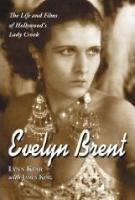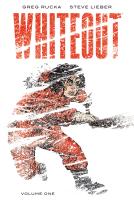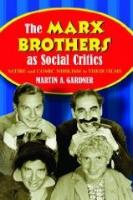Book Talk - October 2009
by Jason Bailey and John Sinnott
This month we have a quartet of movie related book reviews for the bibliophiles out there. At the top of the list is a work by DVDTalk reviewer Stuart Galbraith IV. His book Japanese Cinema offers an excellent overview of the history movies from the Land of the Rising Sun. Next up is a biography of silent star Evelyn Brent, and that's followed by a review of Whiteout. No, not the film but the graphic novel the movie was based on. Wrapping up this month's installment is a look at The Marx Brothers and the social commentary that was an integral part of their movies. Enough chatter, lets get to the reviews!
Japanese Cinema by Stuart Galbraith IV and Paul Duncan (ed.)
Taschen:
 Most American’s knowledge of Japanese movie starts with the
work of Akira Kurosawa and ends with that of Ozu or possibly Seijun
Sukuki
(with a bit of Godzilla thrown in for good measure) but the country has
a rich
film tradition. DVDTalk reviewer Stuart
Galbraith IV hopes to cure that situation with his recently released
(and aptly
titled) book Japanese Cinema. An
excellent overview of the country’s film history Galbraith doesn’t
focus only
on the artistic output of Kurosawa and Ozu but covers a wide range of
genres
and many directors.
Most American’s knowledge of Japanese movie starts with the
work of Akira Kurosawa and ends with that of Ozu or possibly Seijun
Sukuki
(with a bit of Godzilla thrown in for good measure) but the country has
a rich
film tradition. DVDTalk reviewer Stuart
Galbraith IV hopes to cure that situation with his recently released
(and aptly
titled) book Japanese Cinema. An
excellent overview of the country’s film history Galbraith doesn’t
focus only
on the artistic output of Kurosawa and Ozu but covers a wide range of
genres
and many directors.
Everything from giant monsters and anime to salaryman
comedies, chanbara (sword-fight movies, period dramas, and of course
horror
films are all covered. While there is
not space to going great depth on any one topic, the book does give an
excellent introduction to each type of film and is lavishly illustrated
with
many production photos, movie stills, and advertising posters. These images are really attention-grabbing
and say just as much about the films as the text does.
Like all Taschen books this one is a high quality piece of
work. The high
quality glossy paper reproduces the
images very well and the sewn binding ensures that this volume will
last for a
long time. The only thing missing is a
check list. I started inserting pieces
of paper on the pages that had movies I wanted to track down, but I
soon
abandoned that idea as every 2nd or 3rd page had
a
marker.
Highly Recommended.
Evelyn Brent by Lynn Kear with James
King (McFarland
1-800-253-2187):
 Lyn Kear and James King undertook a nearly impossible task
when they decided to wrote a biography of silent star Evelyn Brent. While there was a wealth of information about
her just about all of it came from fan magazine from the time, which
are
notorious for not caring about pesky facts and are more interested in
telling a
good story, true or not. The authors did
an admirable job, sifting through thousands of pages of interviews,
stories and
notices about the actress and trying to separate a publicity agent’s
fiction
from the facts.
Lyn Kear and James King undertook a nearly impossible task
when they decided to wrote a biography of silent star Evelyn Brent. While there was a wealth of information about
her just about all of it came from fan magazine from the time, which
are
notorious for not caring about pesky facts and are more interested in
telling a
good story, true or not. The authors did
an admirable job, sifting through thousands of pages of interviews,
stories and
notices about the actress and trying to separate a publicity agent’s
fiction
from the facts.
Evelyn Brent is best remembered for her role as 'Feathers'
McCoy in Josef von Sternberg’s film The Underworld
(1927), arguably the first gangster picture. Her
sultry looks and forceful screen presence
helped to make the movie a hit, and she went on to star in Paramount’s
first dialog film, Interference
(1928). Her road to stardom was a rocky
one however. Born to a teenaged mother
she started working as an extra in movies as a teen.
She achieved a small amount of success in
Fort Lee New Jersey, but when the opportunity to travel to Europe
presented itself she put her career on hold.
In England
she started acting again, landing roles because of her experience in
American
movies. An illness halted her career
there and she eventually returned to New York
where she was discovered by Douglas Fairbanks Sr. and his wife Mary
Pickford,
who put her under contract and brought her to Hollywood.
It seemed that her stardom was assured, but Fairbanks couldn’t find a role for
the young
lady and Evelyn eventually asked to be released from her contract. Working for Poverty Row studios she slowly
worked her way up the ladder, being named a WAMPAS Baby star in 1923
obviously
helped, and before too long she was working for a major studio.
The outward story of a tough, determined actress that the
public knew wasn’t really true however.
Plagued by depression and illness, Brent attempted suicide a
number of
times. Though the road to stardom was
long and twisting, the fall back to obscurity was rapid.
A series of bad decisions, poor luck and living
beyond her means saw the actress being sued by creditors a few years
later,
despite the fact that she has earned thousands of dollars a week. A string of flops meant fewer offers and soon
she was all but forgotten.
This first biography of Brent is a good read, interesting
and well researched. It’s also
aggravating that there are so many holes in her story.
Brent never wrote an autobiography and the
primary sources, the movie magazines of the day, are not reliable. Information about her illnesses is almost
nonexistent, a line or two in a newspaper that she was taking time off
from
filming to recover is all that’s available in some instances. Was she really ill, or was it a suicide
attempt, or something else? While Kear
and King do an admirable job pointing out unlikely stories and creating
logical
hypotheses for events in Brent’s life (and have certainly done their
research),
the truth will likely never been known.
Even so this is an intriguing look at an actress who never
quite made it to the top echelon of stardom.
While there are many books on the big stars like Chaplin and
Pickford,
there are surprisingly few biographies of lesser know actresses like
Brent. This work presents an interesting
look at what life was like for a middle of the road star in the late
20’s and
early 30’s. This
book is recommended, especially for
students of the silent and early sound era.
Whiteout Volume 1: The Definitive Edition by Greg Rucka and Steve Lieber (Oni Press):
 It’s often said that the book is better than the movie based
upon it. Though I haven’t seen the
theatrical adaptation of Whiteout, I’m sure that is the case in this
instance
since the film has been generally panned by reviewers.
The original comic however is excellent and
it’s easy to see why it was optioned for a movie.
It’s often said that the book is better than the movie based
upon it. Though I haven’t seen the
theatrical adaptation of Whiteout, I’m sure that is the case in this
instance
since the film has been generally panned by reviewers.
The original comic however is excellent and
it’s easy to see why it was optioned for a movie.
Carrie Stetko is a U.S. Marshal who is stationed at the
bottom of the world: Antarctica.
Two weeks before nearly everyone leaves the continent for the winter
Stetko
checks out a remote camp to see why they haven’t reported in and
discovers
something odd and disturbing: the camp
is gone and all that’s left is a dead body frozen solid with his face
ripped
away. Who is this faceless man and who
would want to kill him? More
importantly, where are the other members of the camp?
Carrie only has two weeks to find the answers, and he
superior, sitting at a desk in Hawaii,
say that it’ll be her badge if she doesn’t solve the crime before
everyone
leaves. Stetko starts to track down
anyone who had contact with the camp, but the criminal is quicker. When she visits the British outpost, Victoria
Station, she discovers another two dead bodies and is nearly killed
herself But Stetko is nothing if not
tenacious, and something like attempted murder only makes her that much
more
determined.
This is an interesting detective story, one that is told
well and keeps you turning the pages to find out what happens next. But is more than just a good who-dunnit. Rucka populates his story with interesting
characters, especially the protagonist Carrie Stetko.
There are bad things in her past, and this
has made her cold and unapproachable much like the tundra landscape
that surrounds
her. That analogy is at the heart of the
story, and it’s handled very well. A
lesser writer would have worried that the reader might miss his analogy
and
made it too obvious, but thankfully that’s not the case here. Rucka is subtle and assumes his readers have
a modicum on intelligence.
Many times when I read comics I get the feeling that the
artist and writer are competing with the scribe trying to get as many
words
onto the page as he can, while the artist tries to cram the plot into
the
smallest space possible to make more room for splash pages and
interesting
visuals. That is not the case with this
graphic novel at all. Rucka and Lieber
were totally in synch while creating this work, both playing to their
partner’s
strengths to create a gripping and enthralling work.
Rucka
trusted Lieber enough to tell important parts of the story
with only visuals. When Stetko is facing
her own demons after being released from the hospital for example, the
sequence
is told through a few close-ups and a shot of her lying in her cot. Likewise Steve Lieber never breaks the rhythm
of the story by grandstanding with large panels. Antarctica
is a magnificently beautiful place and it would be understandable if
Lieber
wanted to let go and draw some majestic mountains or large, lonely
snowscapes. He resists this temptation
however and when
he does use a large half splash page it is for a reason that helps the
story as
a whole.
If you’ve seen the movie, don’t hold that against this
book. The original presentation is a
wonderful meshing of art and prose and is much stronger than it would
have been
as a novel. If it has been a while
since you’ve read a comic book, do yourself a favor and pick this one
up.
Highly recommended.
NOTE: Though this is only Volume 1, an entire story is told so you won't have to run out and buy the next one to see how it all turns out.
The Marx Brothers as Social Critics: Satire and Comic Nihilism in Their Films by Martin A. Gardner (McFarland
1-800-253-2187):
 Martin A. Gardner's The Marx Brothers as Social Critics: Satire and Comic Nihilism in Their Films was expanded from the author's PhD thesis, and reads like it. The notion of how their films sent up the morals and mores of their time is a ripe one for analysis, to be sure. The trouble is, that ground has been thoroughly covered by Simon Louvish's indispensible Monkey Business and Joe Adamson's brilliant (if unfortunately hard to locate) Groucho, Harpo, Chico, and Sometimes Zeppo, and those books were enjoyable to read; funny, insightful, entertaining. In contrast, The Marx Brothers as Social Critics is a dry slog, its arid academic approach apparent from the title forward.
Martin A. Gardner's The Marx Brothers as Social Critics: Satire and Comic Nihilism in Their Films was expanded from the author's PhD thesis, and reads like it. The notion of how their films sent up the morals and mores of their time is a ripe one for analysis, to be sure. The trouble is, that ground has been thoroughly covered by Simon Louvish's indispensible Monkey Business and Joe Adamson's brilliant (if unfortunately hard to locate) Groucho, Harpo, Chico, and Sometimes Zeppo, and those books were enjoyable to read; funny, insightful, entertaining. In contrast, The Marx Brothers as Social Critics is a dry slog, its arid academic approach apparent from the title forward.
Though there is some valuable information here (particularly the background on some of the team's finest writers, who frequently don't get their due), there's little new for anyone even casually familiar with the Marx filmography; in fact, there are frequent, embarrassing errors. In an early chapter on the Marx influence in comedy and pop culture, Gardner writes, "Woody Allen created an entire film referring to the Brothers and entitled A New Kind of Love, from one of the songs performed by Zeppo in the film Monkey Business." This sentence will leave both Allen and Marx fans scratching their heads; digging deeper into his description of the film in question, the reader finally realizes that he's talking about Everyone Says I Love You, the title taken from a song each of the four brothers performed individually in Horse Feathers. How many seconds on imdb would it have taken to check that? (And not split hairs, but Zeppo also wasn't the only one to perform "A New Kind of Love" in Monkey Business; all four brothers took a stab at it, during the famous "passport" sequence). Later, Gardner names Buster Keaton as one of the uncredited writers involved in A Night at the Opera; Keaton's time as an MGM gag man didn't begin until two years after that film, in 1937, and every Marx and Keaton bio notes that he first went to work for the Marxes in 1939's At the Circus.
The bulk of the book, however, consists of scene-by-scene (often line-by-line) breakdowns of the Marx Brothers movies, and Gardner's painstaking commentary and contextualization basically boils down to having someone sitting next to you, explaining every joke. He schlepps us through Groucho's first scene in The Cocoanuts, which includes the line "Remember, there's nothing like liberty, except Collier's and The Saturday Evening Post." Gardner then helpfully interjects, "Liberty, Collier's, and The Saturday Evening Post were three popular magazines in America at that time." You get the idea. The Marx Brothers as Social Critics feels much longer than its 210 pages, and its price tag ($35 for a trade paperback) doesn't match up with the quality of what's inside.

